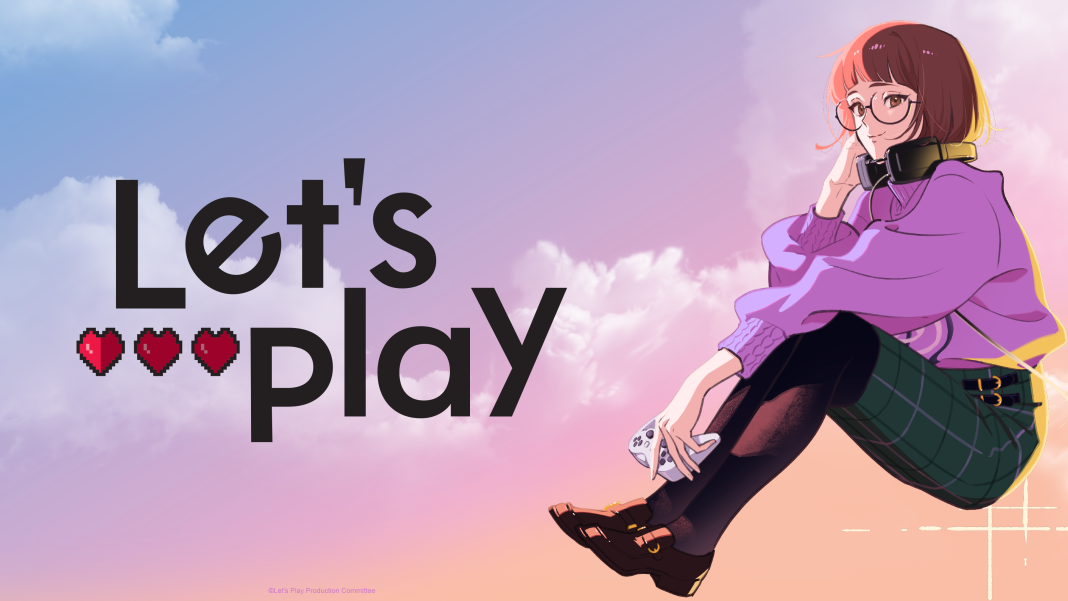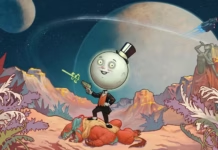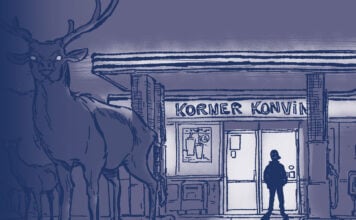The anime adaptation of Leeanne M. Krecic‘s popular webcomic Let’s Play was first announced at New York Comic Con in October 2023. Two years after the initial announcement, the anime adaptation will premiere on Crunchyroll in October 2025.
First launched in 2016 on WEBTOON, Let’s Play became a fan-favorite romantic comedy about video games, memes, and mental health. Although Krecic stopped updating the series in 2022 with Season 3, she confirmed that Let’s Play Season 4 will return in Fall 2025—though the platform has yet to be announced—with potential future seasons in the works. In the meantime, fans of the series can enjoy the print editions of the series from Rocketship Entertainment, which published Volume 4 in July 2025.

Crunchyroll describes the series as:
Samara “Sam” Young is a developer in Los Angeles who’s about to achieve her dreams with her first video game, Ruminate. That is, until a popular streamer gives the game a scathing review. Even worse, Sam finds out the troublesome critic is now her new neighbor! Get lost in a comedic, romantic, and all-too-real story about gaming, memes, and social anxiety. Come for the plot, stay for the doggo.
At Anime Expo 2025, The Beat caught up with Let’s Play creator Leeanne M. Krecic, director Daiki Tomiyasu, and producers Minaka Sakamoto and Hana Sugiwara to discuss the upcoming anime adaptation of Krecic’s popular comic of the same name. We discussed why Let’s Play appeals to international audiences, advice for up-and-coming creators about breaking into the industry, and what parts of the anime adaptation they are most excited for fans to see.
OLLIE KAPLAN: Many readers, including me, see themselves in Sam. What message do you hope you’re sending to them through Sam’s journey with anxiety and self-worth?
LEEANNE M. KRECIC: One of the main messages I want to send is that everybody struggles with anxiety and self-worth. Whether people want to admit it or not, it’s human and natural. The thing about Sam is that she believes in all her friends, but she doesn’t believe in herself. So, a part of Let’s Play is seeing Sam learning to believe in herself. People have to be their own biggest fans, and they have to believe in themselves.
I dealt with horrible social anxiety for a long time, and I was able to get through it. If I can get through it, anybody can get through it.
KAPLAN: Did your writing process help you get through it?
KRECIC: Yes. Well, it was very retrospective. Writing somebody like Sam, how did she get through her anxieties? I asked myself, “What did I do? How did I feel in those moments?”
Sam hyperventilates. I would get nauseous; that was my manifestation of it. But with Sam, it’s like that drop in your stomach when your blood pressure increases and your heart rate races. Then the mind races, and you start spiraling and looping. And so, I can relate to that. It’s so common, but people don’t talk about it enough. I would love for people to be more open and to work on it.
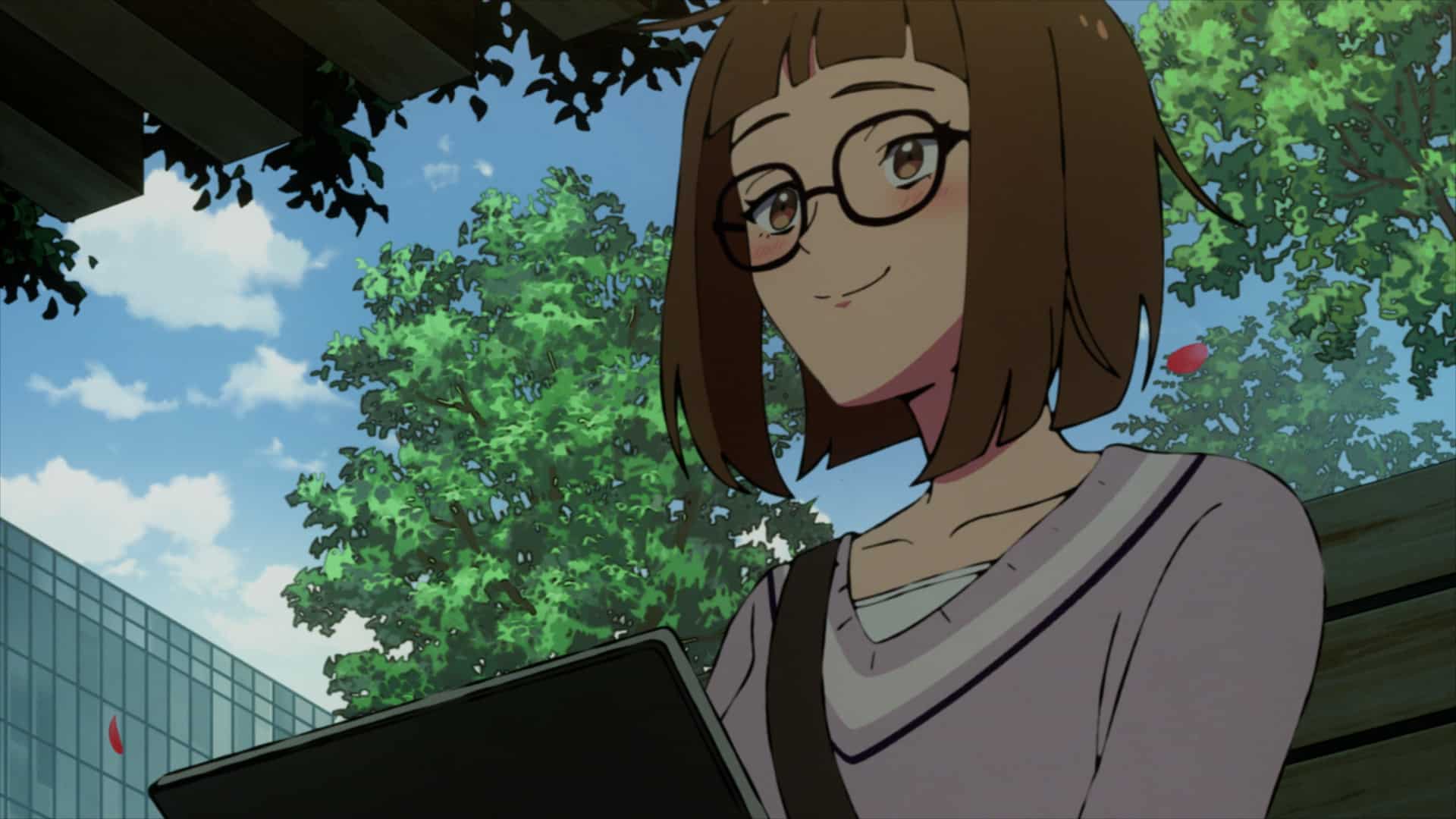
KAPLAN: You’ve openly talked about creator burnout. What advice do you give indie or webcomics creators on avoiding burnout and setting boundaries?
KRECIC: One of the things for me is that while I’ve learned that money is good to pay your bills, I’m not a person who wants to drown in wealth or anything. If I’m comfortable, I’m happy. I don’t require much. Time is the one thing you’ll never get more of, so it’s valuable. It’s vital that we get out, touch the grass, and move because our bodies do not do well being stationary for so long. I would sit for 12 hours at a time, but it’s healthier to get out. You have to take time for your health before your body makes you take time, and think that’s one of the most important things.
KAPLAN: Let’s Play has an incredibly passionate fan base. What’s been the most surprising or touching fan reaction you’ve received?
KRECIC: I see cosplay, which is excellent. I also love the fan art. It’s always amazing, especially at cons. I think it’s because I’ve been on hiatus since I left WEBTOON, and so many fans are still so excited—to me, it’s probably one of the greatest gifts they could give me. They’re understanding and patient, love the title, and are excited about the anime. So that’s great.
KAPLAN: You’re with Rocketship now?
KRECIC: Well, I am with Rocketship, which is doing the version in print. So Let’s Play is still out there, but it’s not being updated.
KAPLAN: What is the future of the series?
KRECIC: I can return to the webcomic in September, when the contract expires. Then, we’ll sync things up with the anime release and the return of Let’s Play, whether it wraps up in the fourth season or if there’s a fifth or a sixth. We’ll have to wait and see. I can stretch it out for 10 years if I want to. I’m still enjoying the title and want to bring it to life and wrap it up.

KAPLAN: To follow up on what you just said, do you want to do it for another 10 years?
KRECIC: I mean… I’ve got other ideas and stories I’d love to tell, so probably not. But I could do it for another couple of years.
KAPLAN: Fans would love that. What has been the most rewarding part of working on the anime?
KRECIC: My favorite part of working on the anime adaptation has been listening to the recordings of the voice actors. Usually, when I watch anime, it’s always in Japanese. I do subtitles. I’m one of those. I love the talent we’ve had. They’re so amazingly professional and on point.
KAPLAN: Which part of the original story hit you the hardest when adapting it?
KRECIC: Again, it was the voice acting. When I heard the voice actors, it was in Japanese, not English, making it feel so real, like an anime. It wasn’t artificial; it was real, which meant so much to me that I cried. I cried like crazy, and was in my office by myself. But it was great. I was so honored and delighted and felt very fortunate.

KAPLAN: You touched on this question during the Let’s Play panel at Anime Expo 2025. Why do you think Let’s Play speaks to a global audience?
KRECIC: I think everybody’s just struggling with their own thing. For example, with Let’s Play, everybody’s leveling up. I don’t want to gamify everything, but I do, because I’ve been gaming since childhood. We’re all just trying to level up, learn, and negotiate through life.
There are not really any bad characters, like bad people, in Let’s Play. Marshall’s dad’s kind of bad, but everybody’s doing their best, and people make mistakes. And everybody understands, like readers understand it, and they can relate, because some of them have made those same mistakes. There is almost always redemption at some point. If it hasn’t happened yet, it will. So, people feel reassured knowing that even though they mess up, it will be okay. Hopefully, things will grow and be better for them.
KAPLAN: One of the exciting things discussed on the panel yesterday was how Let’s Play is inspired by Japanese culture and then translated back. That speaks to the themes as well. Can you expand on that?
KRECIC: For the anime adaptation, there are interesting cultural things. Like Monica, how she stores her business cards isn’t kosher in Japan. Initially, I didn’t think about that, but when it was raised as a concern, I was like, “I don’t know how we’re going to…” And so, that was something we had to talk about. Or there was a moment when we discussed someone moving in next to Sam because they like her, and that’s more common in Japan. It’s considered endearing, but in the U.S., that would not be endearing. So, it’s just stuff like that, where there’s a difference.
We’ve all been very understanding that there’s a difference and tried to find a middle ground, and we’ve found a lot of middle ground that we didn’t realize was there culturally. We share a lot of similarities. Love is universal. Everybody wants to have it. People enjoy reading that type of story and seeing people connect.

KAPLAN: What would you like to tell the fans?
KRECIC: I hope everybody enjoys it. In a sense, I’m terrified because this hasn’t been done with an American creator before, so I really, really, really want it to do well, not just for myself, but for all creators. We are constantly consuming Japanese media, like anime and manga, and this is a chance for us to give back. So, I want other creators to have this pathway in the future, too.
DAIKI TOMIYASU: Japanese fans have a culture that consumes Western media. So, I hope people will enjoy some reverse imports, which animate original American work in Japan, and then deliver it to the U.S. and the world. Since this is an anime adaptation of a western comic, what I wanted to do in this project is not just to adapt the original work into an anime, but to be considerate of all the elements that go into that. For example, when producing the music, we wanted to incorporate city pop music into the story’s playful elements. Likewise, for the visuals, we wanted to incorporate a retro vibe into the anime’s look and feel. So, all those elements—mainly, because I think that some of these cultural aspects of Japan resonate with people overseas…I hope to lean into them to make the anime enjoyable from many perspectives.
KAPLAN: What original story elements were most vital for you to preserve in the anime adaptation?
TOMIYASU: When we first decided to make Let’s Play into an anime, we considered making it more like a regular foreign drama. But then, as I was reading through the comic, I saw these different aspects of it, like the Emote-kun and the Chibi-characters, which you would see in a manga. We heard that the fans enjoyed those characters and thought we couldn’t leave them out, so we made sure to include them in the story. So, the final direction when planning was that those elements were essential to the anime adaptation.
KAPLAN: Sakamoto-san and Sugiwara-san, what does your day-to-day role look like—what are the main tasks you focus on during production?
MINAKA SAKAMOTO: I’m in charge of managing the production. I coordinate between the other producers and key creatives like the director, writer, and character designer to oversee the project’s progress. Since production is still ongoing, I’m constantly checking small details every day, like “Are the licence plate designs accurate?” or “Is the pronunciation of this gaming term correct?”
HANA SUGAWARA: I primarily work with the creative team to develop the story and content, and I also take on outreach—approaching potential promotional partners or committee stakeholders to help broaden the project’s impact and visibility.
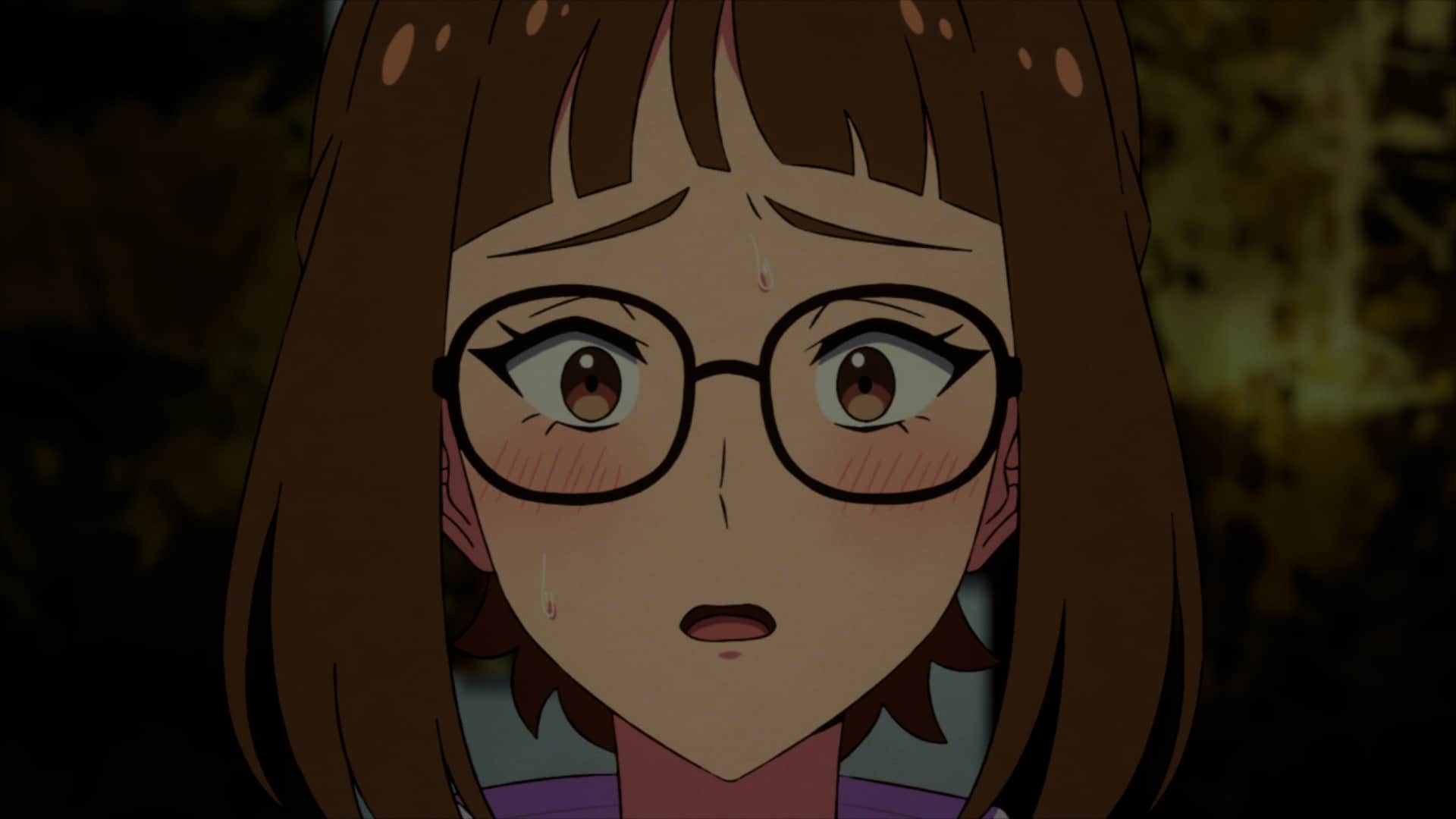
KAPLAN: Sakamoto-san and Sugawara-san, how do you define success as a producer for this project—through sales, streams, critical praise, and fan engagement?
SAKAMOTO: The biggest priority to me was ensuring the series could be enjoyed in both Japan and America. Adapting a Western property for anime is a rare challenge. Fans familiar with the webcomic in the U.S. and viewers encountering it for the first time in Japan will likely have different reactions. If both find the series enjoyable, I’d consider that a success.
SUGAWARA: “Success” takes many forms, but in this case, it would be for Let’s Play to resonate enough that more stories like this—authentic human dramas from overseas—can be adapted into anime in Japan. That’s the kind of impact I’d consider a success.
KAPLAN: Tomiyasu-san, what was your vision for the series, and how did you decide what to preserve or change from the original WEBTOON?
TOMIYASU: Because the original story is a romance set in modern-day America, I tried to reflect that cultural context and contemporary tone as much as possible. At the same time, the producers requested that the character designs be adjusted with the Japanese market in mind, so we made those adjustments while working closely with Leeanne. However, we’ve preserved as many of the original ’90s anime-inspired expressions and iconic symbols like the Emote-kuns as possible.
KAPLAN: What was the most rewarding part of working on the series? Which part of the story hit you hardest—romance, anxiety, friendship, or career struggles?
TOMIYASU: One of the most rewarding and impactful moments for me was hearing the audience’s reactions at the recent premiere screening of Episode 1. As for the theme that struck me the most, I would say it’s the idea of “respecting what others hold precious.” This is something I believe is vital in today’s society, and Let’s Play depicts this theme in a very thoughtful and appealing way.
SAKAMOTO: The first recording session, for Episode 1, really brought a sense of achievement. When Sam came to life—moving and speaking—it was like I was finally meeting her in person. The theme that stood out most for me was “anxiety.” The way the characters’ internal struggles and uncertainties are portrayed are incredibly vivid, and makes you root for everyone.
SUGAWARA: This was my first time adapting a foreign character drama into anime, and that in itself made the experience very fulfilling. The relationship between Sam and Link especially stuck with me—its complexity and emotional realism were unlike anything I’d encountered in other manga.
Watch the Let’s Play trailer below:


